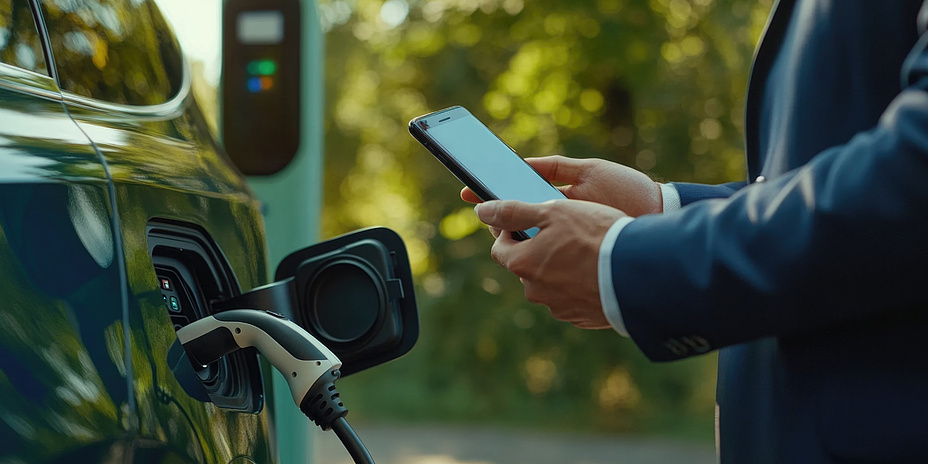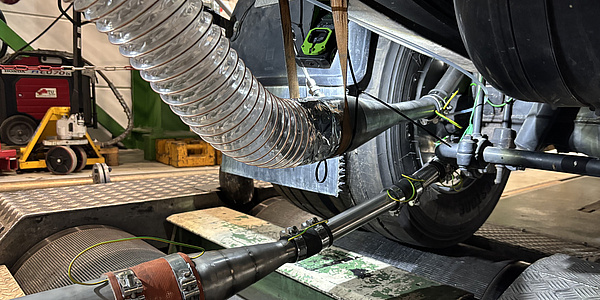Similar yet different: batteries for electric vehicles and smartphones

Apart from size and capacity, what are the biggest technical differences between batteries for EVs and smartphones?
Eva Heider: The biggest difference is in the way they are put together. A smartphone battery is a compact unit comprising one or only a handful of cells. EV batteries, on the other hand, consist of anywhere from hundreds to thousands of individual cells, which are then brought together into modules and ultimately form part of a battery system – the battery pack. Another difference lies in the requirements for performance, lifespan and safety. EV batteries must be capable of handling high currents during acceleration and recuperation – the energy recovery phase when braking. Smartphone batteries tend to be set up with a compact design and energy efficiency in mind. Car batteries, however, also need a complex battery management system – known as a BMS – to monitor cooling, temperature, charge state and safety. In smartphones, battery management is significantly simpler because the areas of application are no way near as extensive. By contrast, the requirements for EV batteries are significantly higher. Fundamentally, though, you can say that the cells are the same – it’s just that in cars they are integrated into a much more complex system and monitored.
Are there recommendations for charging EV and smartphone batteries, particularly when it comes to full charging or complete discharging?
Heider: Batteries should not be completely discharged, and they shouldn’t be fully charged all the time either. These recommendations generally apply to both battery types. After all, both are lithium-ion batteries that share the same chemical composition. Allowing them to fully discharge or keeping them at full charge too often can accelerate chemical ageing or damage the battery. To avoid damage, the usable capacity range in EVs is often restricted, meaning that it is not actually possible to completely discharge the battery or charge right up to the very last percentage in the first place. In smartphones, this is not implemented as consistently, but it should be noted that their planned lifespan is also not as long as that of a car. There is also a significant difference in user behaviour when it comes to charging between the two battery types: a smartphone battery is typically charged on a daily basis, while an EV battery is usually used less frequently, which means that its exposure to cycle stress is lower. The battery management system in an EV is also much more flexible and can take ad hoc precautions, such as slower situational charging, to increase the longevity or lifespan of the battery. This can be referred to as a “gentler” charging system.
Smartphones are almost always safely stowed away somewhere and exposed to less intensive stresses than a car
How do external influences such as temperature, humidity, and vibrations affect batteries, and how is this considered in the way they are put together?
Heider: The demands placed on EV batteries are significantly higher. In cars, batteries need to be able to withstand extreme temperatures – intense heat in summer and cold in winter – as well as humidity and vibrations. For this reason, EVs require more elaborate thermal management for temperature control and additional safety mechanisms such as crash sensors. In the design of EV batteries, special materials, insulation, and heating and cooling systems are directly integrated into the battery pack. A robust mechanical housing serves to protect the battery. Smartphones are almost always safely stowed away somewhere and exposed to less intensive stresses than a car. For smartphone batteries, the focus is more on a slimmer design.
What peculiarities have been observed in the testing of EV and smartphone batteries at the TU Graz Battery Safety Center, particularly with regard to ageing and lifespan?
Heider: There are clear differences in the requirements and testing procedures between the two battery types. Smartphone batteries are tested more for everyday stresses and have simpler protective mechanisms and different safety standards – however, at the Battery Safety Center, we haven’t tested smartphone batteries yet. Since we are part of the Vehicle Safety Institute, the focus of our work is on EV batteries, which undergo specific tests. At the Battery Safety Center, we conduct, among other things, wide-ranging ageing tests to investigate degradation mechanisms such as lithium plating. There are also mechanical tests that deliberately deform batteries of different ages and analyse the differences in behaviour. For this purpose, we have developed dedicated test rigs at the Vehicle Safety Institute. Another way in which the two battery types differ is in their reuse. Generally speaking, no efforts are made to find a second life for old smartphone batteries; they are simply disposed of after use. Their lifespan is also significantly shorter, as device changes occur relatively frequently. In contrast, an EV battery can be used for much longer. The runtime of a smartphone battery remains stable for about two to three years with daily use, while an electric vehicle battery can be used for 8 to 15 years – depending on usage – at which point it can be given a second lease of life. Cycle stress plays a significant role here, and the battery management system actively increases the longevity of car batteries. For both battery types, there are observable ageing influences that depend on fast or slow charging and the temperature range during charging. For this reason, in cars, there are also pre-conditioning measures in place for battery packs before fast charging.
This article is part of the TU Graz Dossier "Are Batteries safe?". You can find further Dossiers at www.tugraz.at/en/go/dossiers
What advantages do solid-state batteries, currently the focus of intensive development work, offer? Would they also be a suitable solution for smartphones?
Heider: Solid-state batteries mainly offer two major advantages: higher energy density and the potential for faster charging. For EVs, this means greater range with the same physical volume and shorter charging times, which increases practicality and boosts acceptance of electromobility. In principle, solid-state batteries would also be interesting for mobile devices like smartphones, as they could potentially enable longer usage times and faster charging. However, there are challenges in miniaturising these batteries, and production is significantly more expensive than it is for standard batteries. It also raises the question of whether a longer lifespan is in the interest of smartphone manufacturers. Regarding the longevity of solid-state batteries, there are not yet enough studies, and development is not yet advanced enough to make reliable predictions.
What general trends are emerging in battery development, particularly regarding materials, recycling and longevity?
Heider: There are several trends. One centres on new materials. Research is being conducted on anode materials, such as the use of silicon anodes instead of conventional graphite anodes with a view to increasing capacity and obtaining more energy from the same physical volume. Charging speed is another important development focus. This aspect is continuously being improved, not only through cell chemistry but also through the further development of software and the battery management system. Another major topic is recycling, and in particular the avoidance or reuse of critical raw materials. This is accompanied by the trend towards higher longevity and reparability. Mindfulness of recycling is increasing, including in the smartphone sector, and it is expected that the industry will follow suit by – to cite one of many examples – enabling more modular designs to make batteries easier to replace and ensure reparability. Currently, this is often not the case, as many batteries are actually glued in. This is not just an issue for smartphones, it also applies to EVs. In the world of electric vehicle batteries, the transition to a “second life” for another application, such as stationary storage, is an exciting trend. The “disassemblability” of battery packs poses a challenge, as there are different arrangements and cell types – round cells, prismatic cells and pouch cells – each of which can have different geometries. Reuse is a key research focus, and is predicated on the ability to disassemble batteries.
Kontakt
Eva HEIDER
Dipl.-Ing. BSc BSc
TU Graz | Vehicle Safety Institute
Phone: +43 316 873 30368
eva.heider@tugraz.at




